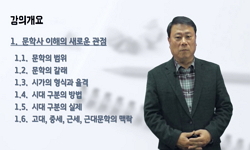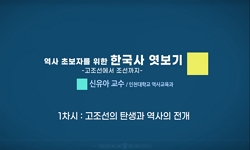This study is, through Sarang-Chae which was a space for visitors, focused on the dynamic appearances of the upper-class houses in Chosun dynasty, which have been recognized as uniform based on Confucianism. Dwelling spaces have been endlessly transfo...
http://chineseinput.net/에서 pinyin(병음)방식으로 중국어를 변환할 수 있습니다.
변환된 중국어를 복사하여 사용하시면 됩니다.
- 中文 을 입력하시려면 zhongwen을 입력하시고 space를누르시면됩니다.
- 北京 을 입력하시려면 beijing을 입력하시고 space를 누르시면 됩니다.
朝鮮後期 上流住宅 사랑채의 空間的 特性에 관한 硏究 = (A) study on the architectural characteristics of Sarang-Chae of the upper-class house in the late Chosun dynasty
한글로보기https://www.riss.kr/link?id=T8415630
- 저자
-
발행사항
부산 : 부산대학교 일반대학원, 1999
-
학위논문사항
학위논문(박사) -- 부산대학교 일반대학원: 건축공학과 1999
-
발행연도
1999
-
작성언어
한국어
- 주제어
-
KDC
617 판사항(4)
-
발행국(도시)
부산
-
형태사항
300 p. : 삽도 ; 27 cm.
-
일반주기명
부록: p. 273-295
참고문헌: p. 267-272 - DOI식별코드
- 소장기관
-
0
상세조회 -
0
다운로드
부가정보
다국어 초록 (Multilingual Abstract)
This study is, through Sarang-Chae which was a space for visitors, focused on the dynamic appearances of the upper-class houses in Chosun dynasty, which have been recognized as uniform based on Confucianism. Dwelling spaces have been endlessly transformed not only by internal factors but also by exchanges with the external spaces, thus they are dynamic according to daily or unusual space usage. The dynamic property is a cause transforming the order embeded in dwelling spaces. Especially, the space of Sarang-Chae had shown distinctively the dynamic aspects in the view of regions, classes and behaviors.
The formation of social spaces in the upper-class houses in Chosun dynasty was the result of social relationships which include village structure taking care of close cooperation as Lineage-village, Yangban-society pursuing broad outside inter-exchanges and amusements, a Large-family housing large family in one house and so on. And the high classes in Chosun dynasty had a superior desire for their social relationship, which had brought the dwelling space divided religiously by the sacred and the secular, functionally by the masculine and the feminine, and hierarchically by the upper and the lower. Besides, it was also separated into private spaces for family life and public ones for guests. However, the dwelling spaces could not be divided infinitely since it is limited. So, there was need for efficient usage of spaces. Sarang-Chae, it was the space satisfying such a need. Sarang-Chae was not limited to simple roles but added with Poong- Ru, and furthermore it had become a parametric space not only separating but also integrating different characteristics-holding spaces in the upper-class houses in Chosun dynasty.
1. Space organization of Sarang-Chae had embedded common characteristics since Sarang-Chae in versatile house types had been had been utilized for a social space kept some distance from An-Chae, and Chukmaru-type was preferred as an architecture of Sarang-Chae. Detailed explanation is as follows.
1) Layout of Sarang-Chae highly depended on house type and An-Chae type. In 「a concentrated type」of house, since Sarang-Chae was near An-Chae, it was kept strictly physical and visual distance from a boundary line. In 「a centralized type」, it was less strict than the concentrated one, but it was located within some distance from Chae to keep atrium. In 「a distributed type」, physical distances between Chae, there was need to consider blocking visual openness.
And in a Jungbu-type with facade from ceremonial composition of An-Chae, spaces was separated as left and right side according to sexuality of spaces. In asymmetric Youngnam-type, Honam-type and Youngdong-type in which An-Chan had practical organization favorable to lightning and etc, sexual spaces was separated as front and rear side, however. Therefore layout of Sarang-Chae reflected regional characteristics.
2) Sarang-Chae could be divided into 「basic and developed types」according to its degree of differentiation, it reflected social level characteristics showing preference and functionality of residents. Basic type was usually classified into Chukmaru-type, Joongangmaru-type, Momaru-type. Circumscribed by three sides, Chukmaru-type was adaptable to hospitalities related to a positive view of the world and Poong-Ru. Contrarity, because of closure.
Compromised with Chukmaru-type and Joongangmaru-type, Momaru-type was a very efficient type to arrange the ㅁ-type in settlement of house-body. Chukmaru-type was the most prevalent type such that it can be regarded to have reflected life style of high classes. The developed type shared the characteristics of the basic type, but room development caused versatile formation of spaces for life, hospitality and ceremony.
2. It was a frame of Confucianism embedded in the upper classes of Chosun dynasty that had broaden characteristics of their houses which varide on dwelling region and its real usage according to region, level and type.
1) The upper-class houses of Chosun dynasty have shared a common characteristic of keeping the order of Confucianism, but they varied on degree of closeness or openness of An-Madang, and characteristics of Sarang-Chae according to the house types, 「a concentrated type」, 「a centralized type」and 「a distributed type」that were most common in that An-Chae was usually open to men of family, and it was open even to relatives in unusual cases. In case of Kyongsang province, due to house properties of closeness, relatives and visitors were limited to Sarang-Chae, and entrance to An-Chae was very restricted even to men of family. In case of Kangwon province, due to the same reason with the case of Kyongsang province, relatives and visitors were also limited to Sanrang-Chae, but entrance to some partial region of An-Chae was permitted for living space of men of men of family. In case of Cholla province, due to house properties of openness, An-Chae was very open to men of family, relatives and visitors, but was visually blocked from Sarang-Chae by closing boundary structure between them. Degrees of openness or closeness of dwelling spaces, which could have varied on domains, can be investigated in a frame of harmony according to regional separation of men of family, relatives and visitors.
2) Sarang-Chae was utilized in common for entertainment, but its coverage and functionality was different according to exchange coverage of each social level, roles in a community and a view of the world. The houses of Sa-Dae-Bu class had been intended as representation or unique in that area, and ones of Hyang-Ban class as locality or homogeneity, but ones of the wealthy as modernity as modernity. In the houses of Sa-Dae-Bu class, reception places could be Sarang-Chae, small Sarang-Chae or a separate house and so on according to guest´s social rank and age. In the houses of Hyang-Ban class, Sarang-Chae had contained all functions for reception because of its low degree of specialization. In houses of Bu-Nong class, barns or gateway-quaters were added to Sarang-Chae.
3) The upper-class houses of same type may have undergone a distinctive change due to custom of community, lineage inheritance by moral of family, type of reception, and form of ceremony. Life space of Sarang-Chae was organized in a nearly similar way in the whole country. Variability of room have forced acceptance of diverse functions generated from a shift in generation of a family life cycle. Space for reception could have been found over the country-wide, but it varied on regions or ranks. Especially, the houses of Sa-Dae-Bu class was prominent in that they weren fully decorated wity architectural aesthetics such as Nu-Maru, a separate house, etc. Only in Kyongsang and Kangwon province, Sarang-Chae was set up a ritual place, and it was settled in the main family.
목차 (Table of Contents)
- 목차
- Ⅰ. 서론 = 1
- 1-1. 연구의 목적과 의의 = 1
- 1-2. 연구의 범위와 방법 = 4
- 1-3. 선행연구의 고찰 및 용어정의 = 12
- 목차
- Ⅰ. 서론 = 1
- 1-1. 연구의 목적과 의의 = 1
- 1-2. 연구의 범위와 방법 = 4
- 1-3. 선행연구의 고찰 및 용어정의 = 12
- Ⅱ. 사랑채의 형성배경과 성격 = 21
- 2-1. 주거의 사회적 기능과 구성 = 21
- 2-1-1. 사회적 상호작용과 변증법 = 21
- 2-1-2. 주거공간의 분화와 조직 = 24
- 2-2. 사랑채의 형성배경 = 31
- 2-2-1. 조선시대 이전까지의 주거의 공간분화 = 31
- 2-2-2. 조선시대 상류주택과 사회적 관계 = 34
- 2-3. 상류주택 사랑채의 역할 = 42
- 2-3-1. 유교적 이상실현 = 42
- 2-3-2. 사회화와 풍류의 장소 = 46
- 2-3-3. 문중의 구심점 = 51
- 2-4. 사랑채의 구성요소와 분화 = 57
- 2-4-1. 사랑채의 구성요소 = 57
- 2-4-2. 사랑채의 분화 = 64
- 2-4-3. 마당과 정원 = 66
- 2-5. 소결 = 68
- Ⅲ. 사랑채의 공간구성 = 69
- 3-1. 배치에 따른 유형 = 69
- 3-1-1. 분류의 기준 = 69
- 3-1-2. 집중형 주택의 사랑채 배치 = 74
- 3-1-3. 결합형 주택의 사랑채 배치 = 88
- 3-1-4. 분산형 주택의 사랑채 배치 = 101
- 3-2. 구성에 따른 유형 = 108
- 3-2-1. 분류의 기준 = 108
- 3-2-2. 사랑채의 일반적 구성 = 111
- 3-2-3. 사랑채의 분화적 구성 = 116
- 3-3. 소결 = 132
- Ⅳ. 사랑채 공간의 지역·계층·행태별 변화 = 133
- 4-1. 지역별 사랑채의 동질성과 차별성 = 133
- 4-1-1. 경상도 지역 사랑채 = 133
- 4-1-2. 경기·충청도 지역 사랑채 = 154
- 4-1-3. 전라도 지역 사랑채 = 162
- 4-1-4. 강원도 지역 사랑채 = 171
- 4-2. 계층별 사랑채의 위계적 구성 =179
- 4-2-1. 사대부층 사랑채 = 179
- 4-2-2. 향반층 사랑채 = 195
- 4-2-3. 부농층 사랑채 = 208
- 4-3. 행태별 사랑채의 적용과 조정 = 220
- 4-3-1. 생활공간으로서의 사랑채 = 220
- 4-3-2. 접객공간으로서의 사랑채 = 232
- 4-3-3. 의례공간으로서의 사랑채 = 245
- 4-4. 소결 = 261
- Ⅴ. 결론 = 263
- 5-1. 연구결과 = 263
- 5-2. 연구후기 = 266
- 참고문헌 = 267
- 부록 = 273
- 영문초록 = 296










